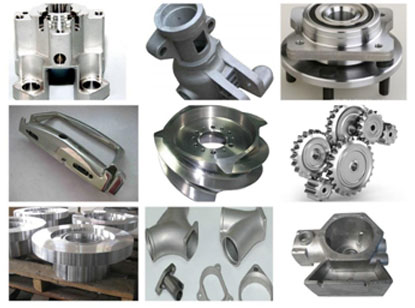Stainless Steel Casting
Stainless steel casting is a metal working process to produce custom stainless steel parts. It works by pouring Melton stainless steel into molds for solidification, thus to achieve a solid stainless steel component in a desired shape.
Compared with other processes, stainless steel casting can create complex components with fine detail and good dimensional accuracy, which reduces or eliminates post machining operation. It is also a great alternative to welding fabrication process, as several stainless steel parts can be cast in one piece, which saves the time and cost for additional welding or assembling.
Stainless steel casting is considered where both the properties of steel and corrosion resistance are required. So like other cast steel alloys, stainless steel is one of the commonly used materials in casting production.
| 304 | The most widely used austenite steel, may be referred to as A2 stainless. |
| 304L | This grade has slightly lower mechanical properties than the standard 304 grade, but is still widely used in casting for its versatility |
| 316 | The second most common austenite steel, also referred to as A4 stainless. SS316 is used primarily for its increased resistance to corrosion. |
| 316L | Lower carbon content than 316 stainless steel, which reduces the sensitization effect caused by the high temperatures involved in welding. Besides, it shows better resistance to stress-corrosion cracking. |
| 17-4 PH | Most common precipitation-hardening martensitic stainless steel, which uses about 17% chromium and 4% nickel. |
| 2205 Duplex | Used for its good mechanical properties and excellent corrosion resistance properties. 3A, 4A, 5A, 6A...ETC. |

